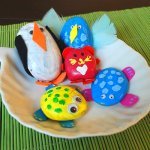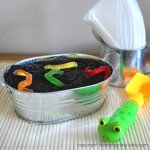Exercise Can Enhance Learning in Children
by Laban E. Propst, M.S.
(Greensboro, NC)
There is an ongoing effort among educators to find new ways to increase children’s test scores and academic performance. New strategies and techniques are constantly being researched in an effort to increase learning during childhood and adolescence. Even with all the ongoing research, our children still struggle come test time. Many studies have shown that exercise increases memory and learning, however, it is often overlooked as an enhancement strategy for educators.
Exercise not only provides a positive impact on health and physical development, but it also improves most bodily systems. For example, learning and memory are increased because the brain receives numerous benefits from regular participation in exercise. These benefits are the result of:
• Increased oxygen flow to the brain
• More efficient synaptic activity
• Stimulated neurogenesis
• Increased production of various hormones responsible for
growth and development of the brain.
Although there are many other benefits that the brain receives through exercise, these processes are the most extensively researched.
Although limited, there is recent research that directly links exercise to learning and memory enhancement in children. One study examined what happens when primary schools cut back on academic instruction and increased time for physical play. Contrary to the expectation that children’s performance would decrease, children showed an increase in academic performance as time for physical play increased (Trudeau and Shephard, 2008). In addition, research has shown a strong correlation between the physical fitness of children and their cognitive performance. For example, one study measured the brain activity of school aged children while participating in a stimulus discrimination task (children had to quickly distinguish between pictures of cats and dogs) (Hill et al, 2005). Children who were physically fit displayed faster reaction times and more extensive processing abilities. This higher level of information processing may translate into the ability to learn more easily.
The intensity at which physical activity is performed also has an impact on the association between exercise and increased cognitive functioning. Although increases are found regardless of what type of exercise is performed, greater increases are seen when participants execute high intensity routines. While the benefits of high intensity exercise are great, there are also minimal risks. To eliminate these risks, children should be monitored by a professional when they participate in high intensity programs. Always research the background and education of any person instructing your children in programs of this type. Some safe exercises that are considered higher intensity activities include:
• Bear Crawls
• Frog Jumps
• Jumping Jacks
• Mountain Climbers
• Sprinting
The most important factor to consider when trying to enhance learning through exercise is making activities fun for children. Research has shown that the more regularly a child participates in an exercise program, the greater the increase in their cognitive functioning. If children are engaged in activities that incorporate certain strategies to increase learning in a fun way, they are more likely to repeat those activities on their own. This will not only allow children to increase cognitive function, but also increase health and development parameters.
One simple game that I have designed involves processing information while exercising. This is a new technique with limited research to support it; however, the research that has been done demonstrates increased learning. “Bears on Dots” is the name of one game I use with preschool aged children. To play this game, scatter poly spots across the play area in either a random or organized pattern. When teaching color recognition, I have the children recite the color before they can place their “bear paw” on that color dot. Depending on the number of poly spots you have and how you organize them, you can have the children take turns, participate in groups, or bear crawl on the spots all at once. You can also modify this activity to teach children how to count, learn the alphabet, and much more. You can even change the type of movement children use to travel from dot to dot.
Bears On Dots Setup

Key points:
• Make sure children watch where they are going
• Travel among the children and correct errors (i.e. recite
wrong color, letter, number, etc.)
• Encourage children to use only hands and feet (no knees)
when bear crawling
• Make sure children try to place “bear paws” only on the
dots. This will impact their eye hand and eye foot
coordination.
• Make sure children evenly distribute their weight among all
4 limbs.
• MAKE IT FUN!
Researchers are continuously looking for new ways to improve learning in children. With children still struggling in the classroom, it may be beneficial for educators to consider incorporating exercise programs when trying to improve the academic performance of students.
Laban E Propst, M.S.
Pediatric Exercise Physiologist
Executive Director, Building Blocks Program
336-324-3197
lpfit@hotmail.com
Add us on Facebook






